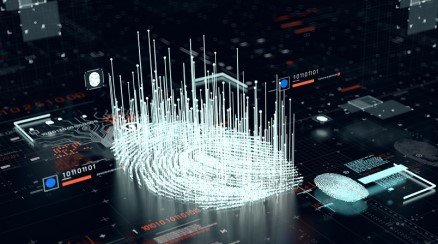By: Ch. Muhammad Natiq Ubaid, Defense and Strategic Affairs Analyst, Chief Editor – Editorial & Commentary TN Media News
The main and only goal of the Police Investigation team(s) and criminal justice is to solve crimes and bring the real criminal to prosecution without error. Seasoned and errorless investigation of a crime leads to seamless and rightful justice. Since humans are involved in this process, the possibility of error is always there.
According to various studies, the number of prisoners falsely accused of a crime is an estimated 1%. Other statistics regarding false convictions suggest the number is as high as 5-10%. In countries like Pakistan, these statistics are more startling and we have seen in years many cases where a wrong person was convicted of a crime he/she has never done.
To diminish this startling statistic, AI (Artificial Intelligence) can be implemented into this procedure to reduce errors. AI provides avenues for criminal investigators to use technology to bring rightful justice. By using intelligent machinery, the workload of investigators can become easier to manage and even more accurate.
Researchers in Malaysia are developing AI software for CCTV cameras to lower the number of street crimes in the country. This software can autonomously detect these crimes only by analyzing the footage in the security camera.
This software would do the following (in order):
- Detects if a person in the footage is wielding a weapon.
- Inspect if the suspect in question is engaging in “aggressive actions.”
- The software then informs law enforcement if a crime is suspected.
Researchers hope this AI technology will help police stop crime as it happens and deter potential crime from occurring by using facial and gait recognition technology to identify criminals and gauge aggressive behaviour.
Facial & Gait Recognition Technology
Gait is a person’s manner of walking and a person’s gait is as unique as their voice tone. Using this knowledge, gait recognition technology was created based on Machine Learning (ML) algorithms. ML-based systems can identify a person from an image even if their face is out of view, turned away from the camera, or concealed behind a mask.
The system analyzes the silhouette, height, speed, and walking characteristics and identifies the individual from a database. This technique is more convenient than retinal scanners or fingerprints in public places as it is unobtrusive. Moreover, gait recognition is unlikely to be outsmarted — every person’s gait has no duplicates.
Facial recognition is a technology capable of matching a human face from a digital image or a video frame against a database of faces to confirm an individual’s identity. This technology enables law enforcement agencies to match an offender from their database and check his past offences and crimes.
Processing Older DNA
AI technology has become highly efficient at processing DNA. Since DNA evidence was introduced to forensics in 1986, solving crimes has become more accessible and more concrete. As AI technology improves, so does DNA processing.
With the help of direct-to-consumer genetic genealogy databases, over 50 cold cases were solved, from missing persons to murder (a foreign record). Also, one of the most prominent serial killers, dubbed the “Golden State Killer,” was eventually brought to justice using the same type of databases after living in society freely for decades. The 12 cases surrounding the “Golden State Killer” were reexamined using newer DNA technology.
With 6,544 unsolved cases in 2019, AI and DNA technology could help uncover answers for investigators to lower the number of cold cases. (US Data)
Risk Assessment Tools
Risk assessment tools are used to assess the potential suspect and predict how much of a danger they pose. RAIs (Risk Assessment Instruments) use AI to determine the probability of a criminal reoffending and provide help with the prosecution process.
Studies suggest that algorithmic RAIs have the potential to create consistent and accurate results. Researchers found that judges who used checklist-style RAIs, which determine things like age and the number of times a suspect failed to appear in court, yielded more consistent results in determining risk assessment.
Conclusion
The use of AI technology will trim down crimes in Pakistan, especially from low-intensity crimes like street crimes, burglary and thefts to High-Intensity Crimes like target killing, murders and etc. This will also trim down court case durations and will enable the judiciary to pass more real justice to the criminals.





